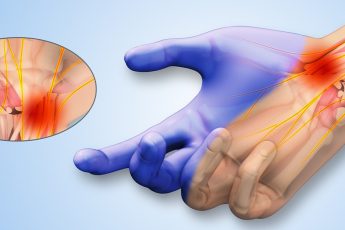
Carpal Tunnel Syndrome: Causes, Symptoms, and Effective Treatments
Carpal Tunnel Syndrome (CTS) is more common than many people realize. It often starts as a minor tingling or numbness in your hand, particularly in the thumb, index, and middle fingers. Over time, it can grow into persistent pain, weakness, and a loss of grip strength that can make even simple tasks—like holding a pen or using your phone—feel frustrating or even impossible.
CTS happens when the median nerve, which runs from your forearm into your hand, gets compressed at the wrist. This nerve passes through the carpal tunnel—a narrow passageway made of bones and ligaments. When this tunnel becomes narrow or the tissues surrounding the flexor tendons swell, they put pressure on the nerve. That’s when the symptoms begin.
But here’s the good news: CTS is treatable. The sooner you catch it, the better the outcome. Here’s a grounded, no-nonsense guide to how people in the real world—especially those juggling work, family, and daily stress—can approach carpal tunnel syndrome treatment.
Step 1: Listen to Your Body Early On
Most people try to push through the initial signs. Maybe it’s because they think it’ll go away, or they’re too busy to deal with another medical issue. But early symptoms like hand tingling at night, a “pins and needles” feeling, or dropping things more often than usual are all red flags.
Start by observing when symptoms occur. Are they worse at night? Do they show up after typing or driving? This information will help your doctor—and it’ll help you make smarter decisions about your routine.
Step 2: Modify Daily Habits
This is one of the most effective early-stage treatments. Look at your posture while using your computer, especially the position of your hands and wrists. Ideally, your wrists should be straight, not bent up or down, and your keyboard and mouse should be at a height that allows for a neutral wrist position.
Take frequent breaks. If you work at a desk or use your hands repeatedly (typing, assembly work, driving), set a timer every hour to stretch your hands and move your wrists around. Shake them out, rotate them, and stretch your fingers. These simple routines can relieve strain on the median nerve.
Avoid gripping things too tightly, whether it’s a steering wheel, a phone, or a tennis racket. Try to maintain a light grip and avoid repetitive hand motions when possible.
Step 3: Use Wrist Supports
Wrist splints can be very helpful, especially at night. Many people curl their wrists while they sleep without realizing it, which compresses the nerve and causes that annoying nighttime tingling. A simple, soft splint that holds your wrist straight can make a big difference.
Daytime splints might also be helpful if your symptoms are more constant, though they might get in the way of some tasks. You can find wrist splints at most pharmacies or medical supply stores. Look for ones that keep your wrist neutral and are comfortable to wear for long periods.
Step 4: Try Non-Surgical Treatments First
Doctors typically recommend starting with conservative treatments before considering surgery. These might include:
Anti-inflammatory medications: Over-the-counter NSAIDs like ibuprofen can help reduce inflammation around the nerve.
Physiotherapy: A trained physiotherapist can guide you through exercises to stretch and strengthen the muscles in your hand and wrist.
Steroid injections: In some cases, corticosteroid injections directly into the carpal tunnel can provide temporary relief by reducing inflammation.
The key here is consistency. These treatments won’t work overnight. But with regular effort over a few weeks, many people experience noticeable improvement.
Step 5: Know When It’s Time for Surgery
If non-surgical treatments aren’t helping, and your symptoms are getting worse—such as persistent numbness, muscle wasting at the base of the thumb, or ongoing pain that interferes with your life—then it might be time to consider surgery.
Carpal tunnel release surgery is a straightforward procedure. The goal is to relieve pressure on the median nerve by cutting the ligament that’s pressing on it. This can be done as an open surgery or endoscopically, which uses a smaller incision and usually results in a faster recovery.
Recovery typically takes a few weeks, although full strength might take longer to return. Most people go back to work and their normal activities with significantly less pain and better hand function.
Step 6: Focus on Prevention After Treatment
Whether you treat CTS conservatively or have surgery, prevention is crucial to avoid recurrence. Keep practicing good wrist posture. Continue hand and wrist exercises, especially if your job or hobbies involve repetitive hand use.
If you’ve had surgery, follow your physiotherapist’s advice closely during Carpel tunnel syndrome treatment. They’ll help ensure you regain full function and avoid creating new issues.
Final Thoughts
Carpal tunnel syndrome is manageable, and in many cases, completely treatable. What matters most is acting early, being honest about your symptoms, and staying consistent with your care. With the help of Adam Vital Hospital, you can return to your daily activities without pain, weakness, or frustration.
If you think you may be developing CTS or have been struggling with it for a while, don’t ignore it. Take the first step—small adjustments today can save you a lot of discomfort down the road.

